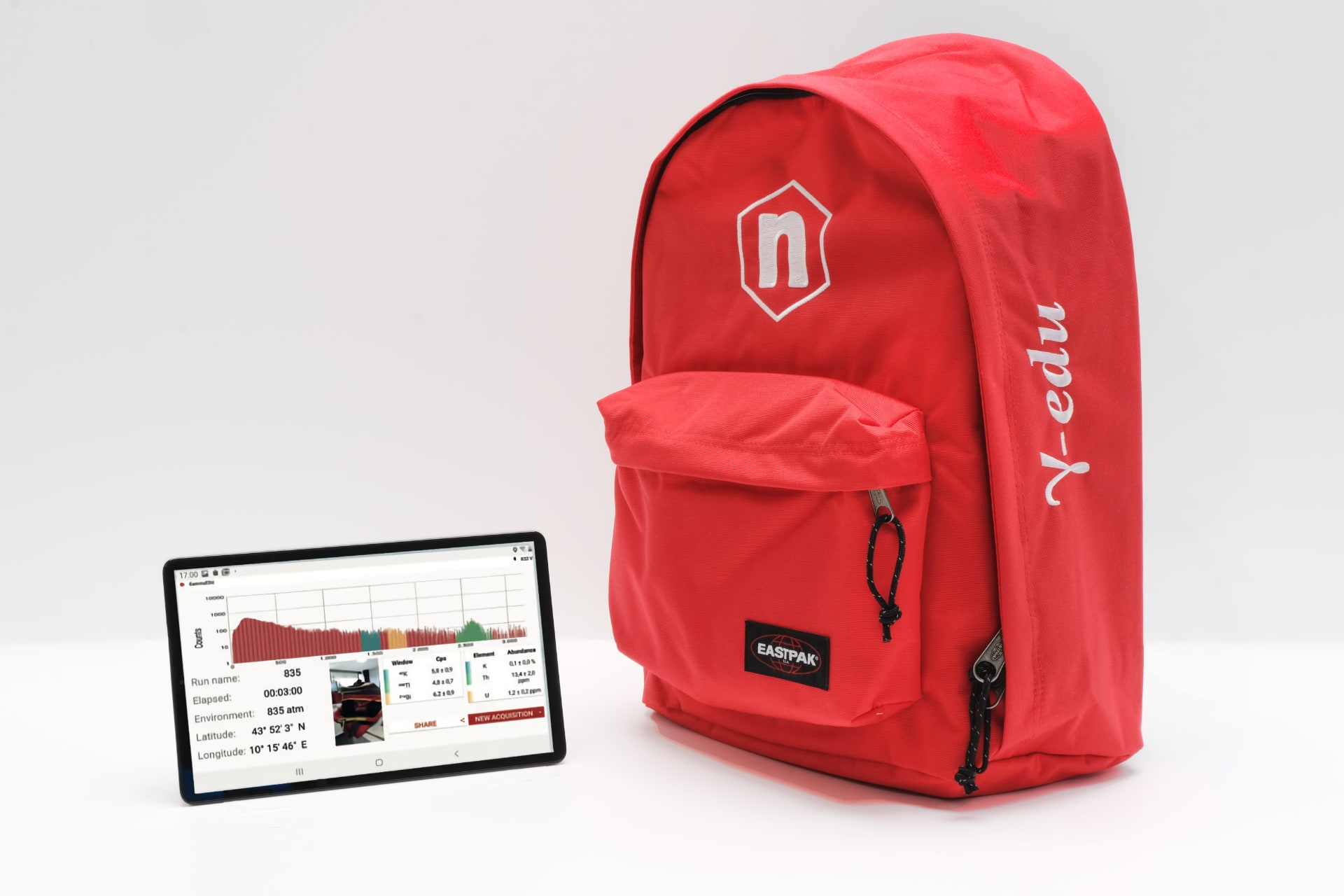Hardware setup
This experiment guide is referred to the SP5640 educational kit.
Equipment: SP5640 – Backpack Detector
| Model | SP5640 |
|---|---|
| Description | Backpack Detector |
Purpose of the experiment
The experiment topic is aimed at understanding how gamma-ray measurements can provide information about the water content of the soil.
Fundamentals
The global warming effects put in danger global water availability and make it necessary to decrease water wastage. A lot of researchers are focusing their attention on monitoring global irrigation due to global irrigation information is scarce due to the absence of a solid estimation technique. Recent studies show that proximal gamma-ray spectroscopy represents an innovative approach able to fill the spatial gap between punctual and satellite soil water content measurements.
A gamma-ray station measures the 40K in the soil and monitors the moisture for the rational use of irrigation water. When it rains, the gamma signal is attenuated by the water and it drops down, while when the soil dries up, the gamma signal rises again.
Carrying out the experiment
Power on the γstream inside the red backpack. Power on the tablet and associate the two devices via Bluetooth. Take care that the γstream internal battery is charged, otherwise use the external power system.
Start the measurement campaign in the land field and place the backpack on the floor almost 1m far from the trees, manhole or other construction. Set the acquisition time to about 5 minutes and see the results. If the statistic is not enough to increase the acquisition time.
Repeat the measurements in the same place but in different weather conditions. Remember that it is good practice to repeat the measurement to obtain the mean and standard deviation of the result.

Results
This experiment represents a simple way to observe how Potassium 40 detection is affected by the water content in the soil.


